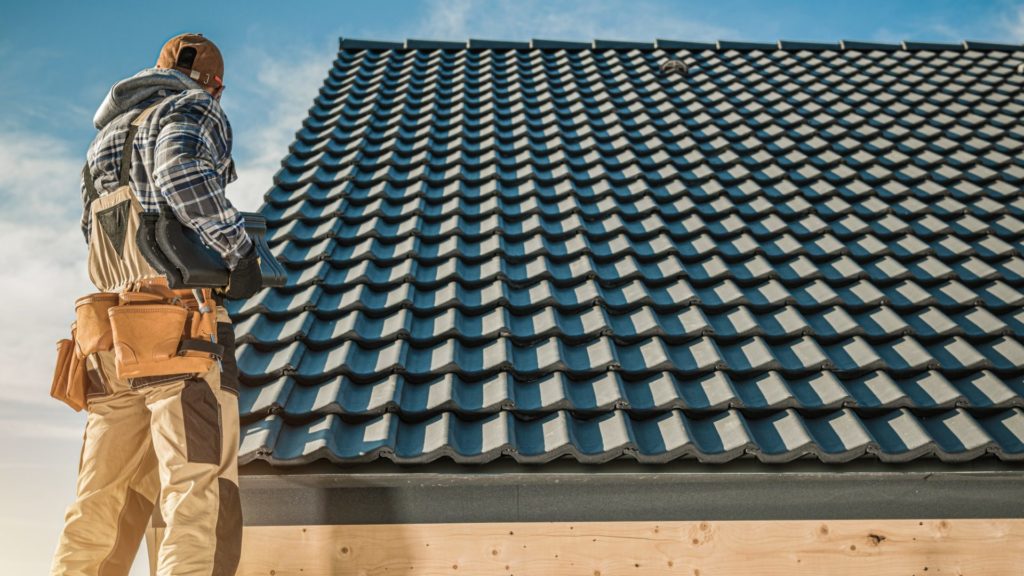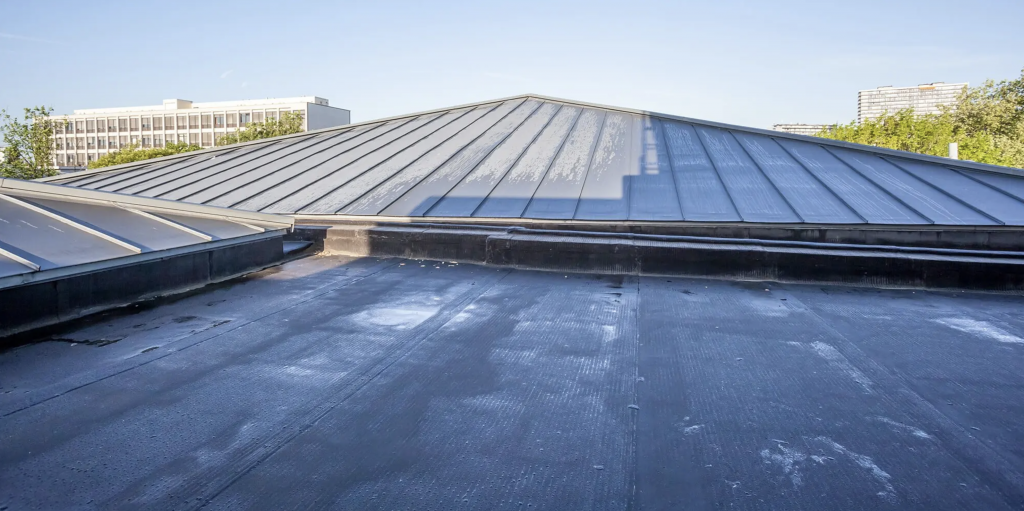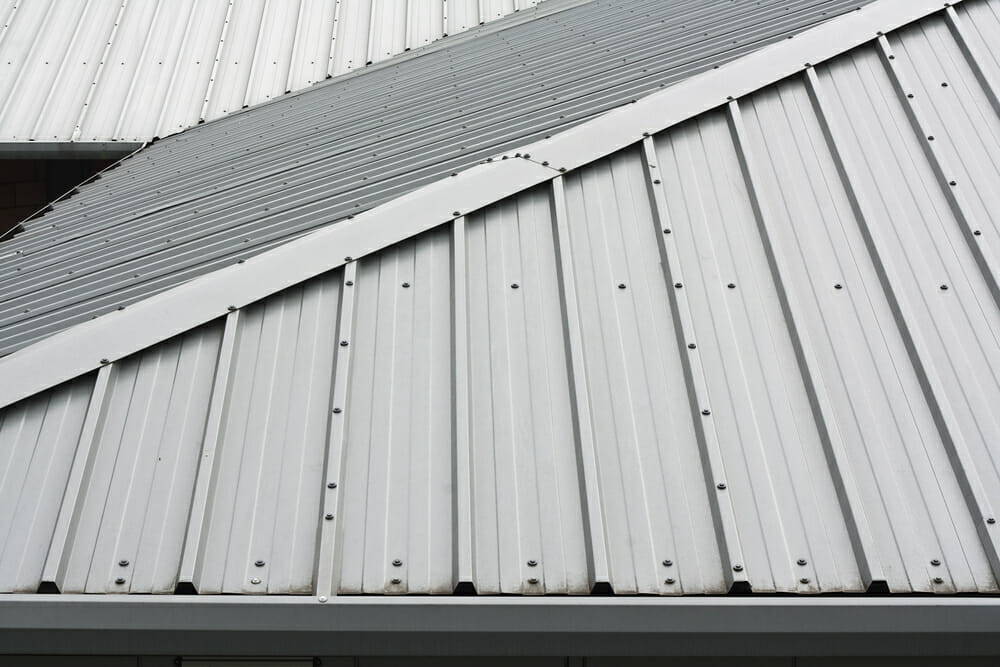What is the best commercial roofing material?

The process of roof repair and replacing roofs can be a dangerous and tedious task, so it's always advisable to hire a professional for your roofing project.
Each commercial roof type has its pros and cons, and because of the variety of options available, making a choice is more difficult than ever before.
The type of roof that your commercial property has plays an integral role in the building's overall health and the roof’s durability. Over time, the surrounding climate, typical weather, and any foreign variables such as wildlife, plants, etc. can also have an effect on the roof's integrity.
To help you gain an understanding of what it takes to build a quality commercial roof, we're going to look at the most common classifications of commercial roofs and the roofing materials used to produce them.

What are the 7 most common commercial roofing materials?
- Built-Up Roofing Membrane
- Metal Roofing
- Green Roofing
- Spray-On Roofing
- Shingle Roofing
- Thermoset (EPDM) Roof Membrane
- Thermoplastic (PVC & TPO) Roof Membrane

Built-Up Roofing Membrane (BUR)
This is made by alternating layers of tar and gravel, with an estimated lifespan of more than 20 years. Durability and cost is determined by the number of layers in the membrane.
It is inexpensive and quick to repair and is one of the oldest and most versatile styles of roof.
This form of seamless roofing holds well for foot traffic, but to bear the weight and vibrations of movement, it relies on its solid understructure. It is UV-resistant and to reflect heat, can be coated.
The only downside to this type is that it has the shortest lifespan in the group and it can be difficult to identify the source of a leak as the roof ages.

Metal Roofing
This is one of the most common commercial roofing styles on the market, due to its 40 to 60-year lifespan. There are many different types of metal roofing systems available, and some even come with integrated solar or integrated snow removal systems.
Popular metal roofing materials found are:
- Galvanized corrugated steel
- Aluminum
- Copper
- Tin
- Tile sheets
- Coated steel
Metal roofing can have an appealing, finished appearance, with a strong resistance to fire and is much safer and sustainable compared to many other alternatives. The only downside to this type is that metal can be corroded and develop rust. However, modern metal roofs have protective surface layers added to handle damage from exposure to moisture, pollution and other environmental factors.

Green Roofing
These are the most flexible kind of commercial roofs. In recent years, they have not only become popular, but they offer a genuinely sustainable alternative for commercial property and businesses. The benefit of green roofing systems is their ability to shield commercial buildings from the elements while handling water, ventilation and improving energy efficiency at the same time. They are stunning to look at and a big step towards a more environmentally friendly commercial property that is more sustainable.
A green roof can last from 30 to 50 years. They are made of a durable waterproof membrane fully covered by green plants. They also have a sophisticated management of water and drainage, climate control and sensor capabilities. These ecological masterpieces increase the quality of the air and also add a green space for workers to relax and rest.
Spray-On Roofing
In short, Spray Polyurethane Foam (SPF) is a substance that starts as a liquid spray that expands into a foam immediately, which hardens into a solid sheet. This particular eco-friendly roofing is added on top of an existing roof, and has been around since the early 1960s, but isn't very well known.
An SPF roofing device waterproofs and adds an insulating component. It can be used in any environment and with proper installation and maintenance, can last up to 50 years.
The only disadvantage is that the installation window is limited to favourable environmental conditions (cannot do it in rain) for this specific form of roofing, and once installed, SPF roofing should be tested once or twice a year.

Shingle Roofing
Shingles are often used on commercial properties and are often seen on residential buildings as well. Shingles come in many materials like asphalt, slate, plastic and ceramic. This type is relatively simple, inexpensive and flexible to install. You should hire a roof tiler to get this job done for you.
The only disadvantage is that the life cycle of shingles is not as long as other commercial roofing options. Also, shingles are prone to mildew and moss in the location of the roof is in shadows.

Thermoset (EPDM) Roof Membrane
Thermoset roof membrane also called ethylene propylene diene terpolymer (EPDM) is a roll-based, synthetic rubber roofing membrane. This type of roofing provides high resistance to sunlight and emissions. It is long-lasting, flexible and quick to install.
EPDM comes in white and black rolls, and this single-ply rubber is robust in the face of many popular solvents, such as alcohol or acids, in addition to sun and pollution resistance. This type is commonly seen at airports.
The only downside is that this type of roofing can easily puncture from falling debris, hail, or people walking on it.

Thermoplastic (PVC & TPO) Roof Membrane
TPO (Thermoplastic Polyolefin) and Poly Vinyl Chloride (PVC) roofing systems are resistant to adverse conditions. UV light, chemicals like fats and oils, or bacterial growth are all slow to damage these types of roof membranes. They are lightweight, heat-reflective and resistant to punctures. The seam strength offered by thermoplastic roofs makes them ideal for second-generation applications. The nature of these resistances makes thermoplastic roof membrane popular for restaurants and other businesses that emit oils and fats from their ventilation systems.
These membranes also benefit from high-temperature tolerance to high resistance to fire and fast winds. Do be cautious of cheap poorly made products and always buy from a reputable manufacturer.
What is the right roof for you?
If your property needs new commercial roofing, you should consider all the factors such as the different roofing materials, visibility, frequency of walking on it, exposure to grease and acid, location to the sun, exposure to high temperatures and wind.
All these factors will influence the choice of your roofing material. You should consider the roof's longevity and the annual cost of repairs. Consider the energy costs of the different kinds and shades of roofing materials, as well. A dark-coloured roof may minimise their heating bill in cold weather climates, whereas warm weather offices can need a white roof to limit the strain on their air conditioner.